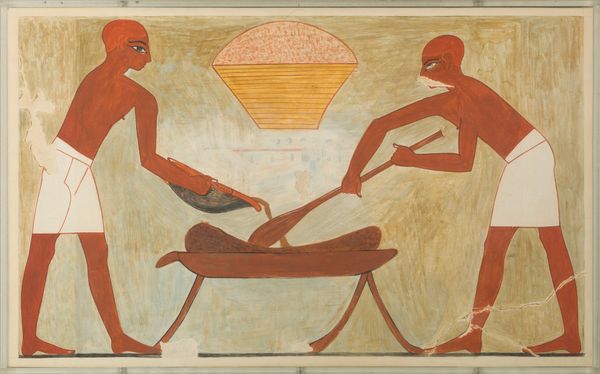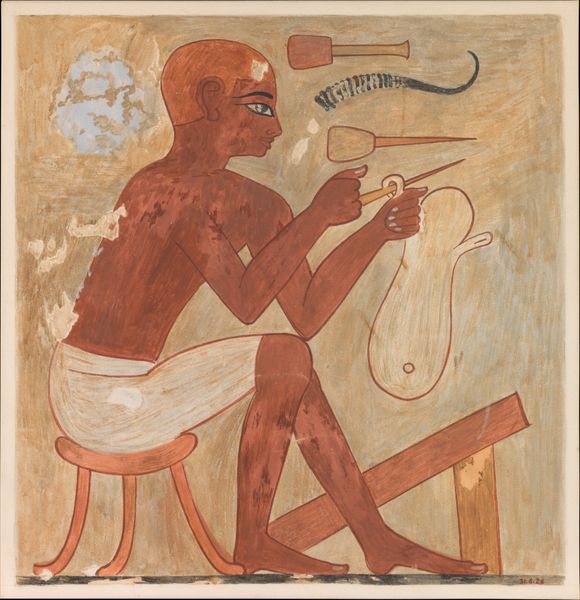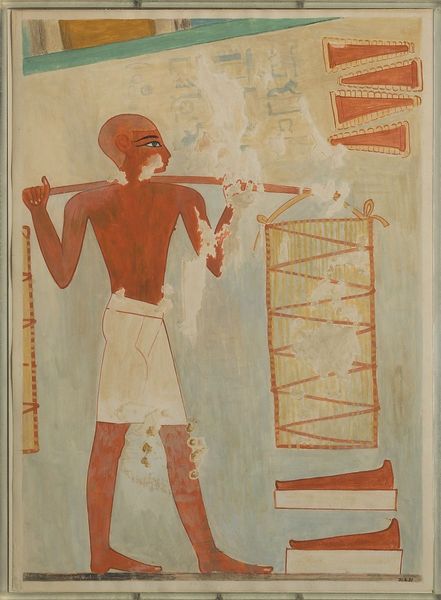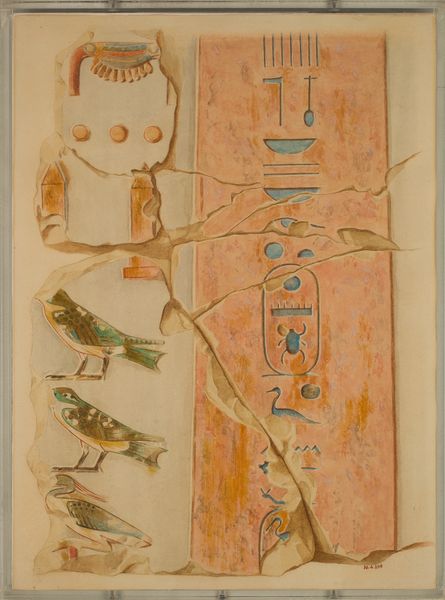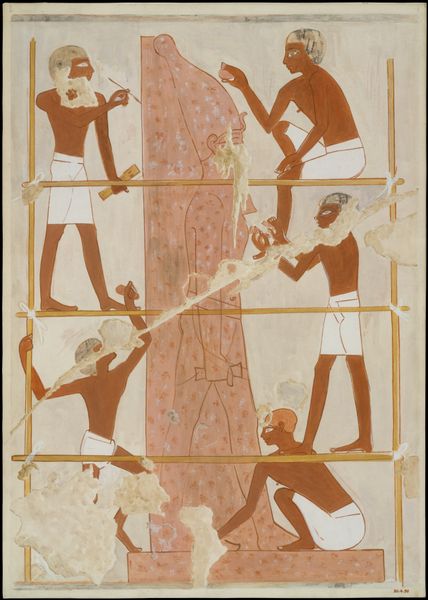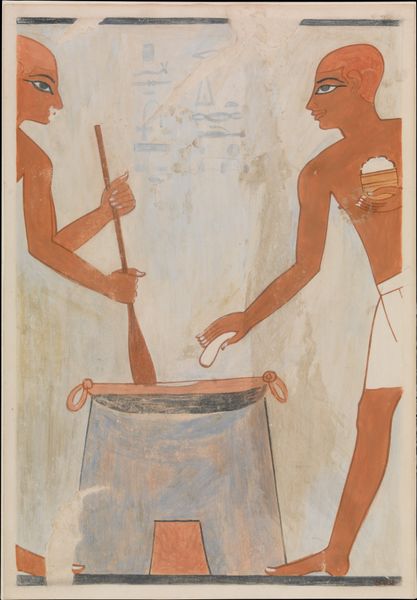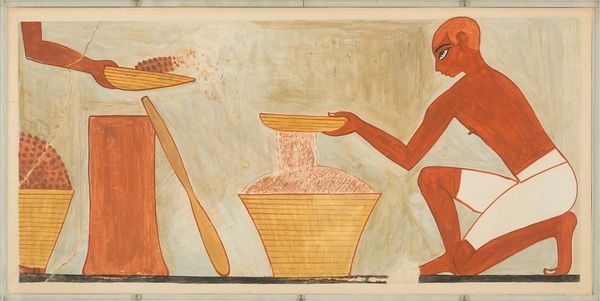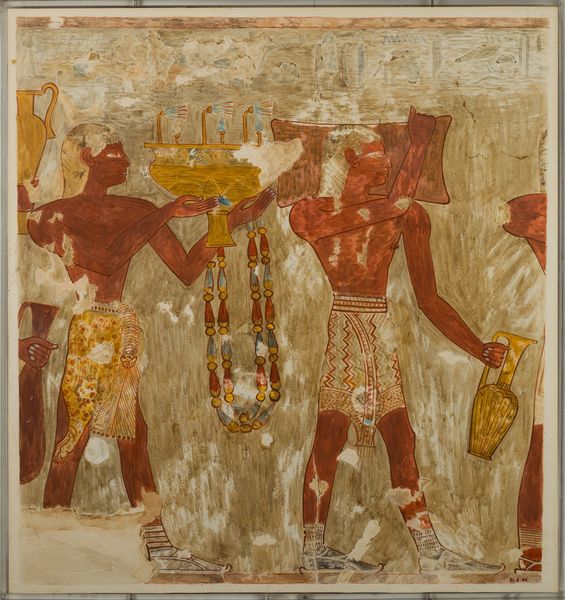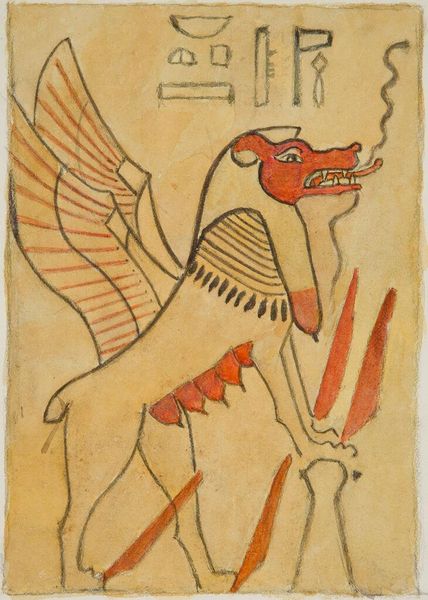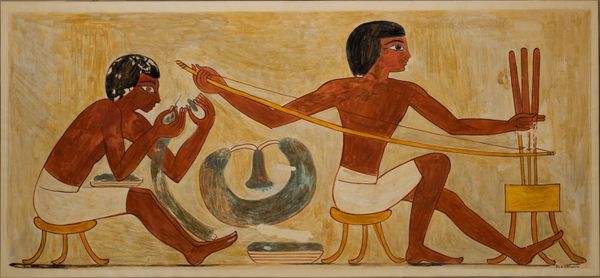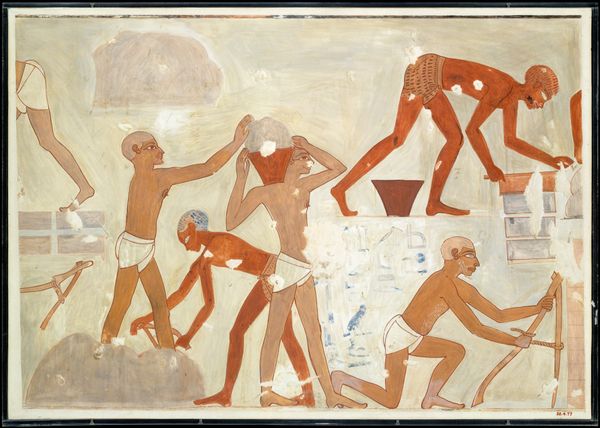
painting, watercolor
#
food
#
water colours
#
narrative-art
#
painting
#
ancient-egyptian-art
#
figuration
#
watercolor
#
egypt
#
ancient-mediterranean
#
men
#
watercolour illustration
#
genre-painting
#
history-painting
#
watercolor
Dimensions: facsimile: h. 43.5 cm (17 1/8 in); w. 20 cm (7 7/8 in) scale 1:1 framed: h. 46.4 cm (18 1/4 in); w. 23.5 cm (9 1/4 in)
Copyright: Public Domain
Editor: This is “Pounding Meal, Tomb of Rekhmire,” from around 1504 BC, attributed to Nina de Garis Davies. It’s a watercolor painting. It feels…functional, almost like a record of daily life rather than high art. What’s your take on it? Curator: It's so much more than just "functional," wouldn't you agree? This piece is potent precisely because it's rooted in the daily grind. By representing this seemingly mundane act of food preparation within the tomb context, it’s elevating labor and situating it within a larger framework of sustenance, ritual, and, importantly, social hierarchy. Think about who is doing the pounding—and what that signifies about divisions of labor. Editor: Ah, good point. It does seem to show a certain class…servants maybe? Are there other cues beyond the simple act itself? Curator: Absolutely. Consider the context: this isn't just any depiction of food preparation. It's in a *tomb*, Rekhmire’s tomb specifically, who was an important vizier during the reign of Thutmose III. Think about what it meant to depict labor so prominently within such an elite space. What commentary might it offer on power dynamics or even the ideal afterlife? Editor: I guess it's showing how integral labor is, even after death. That even someone of Rekhmire's status depends on these workers. It's… revolutionary for its time? Curator: Exactly! And even beyond that, consider the politics embedded within representations of the body, and who gets to be remembered and how. What does the choice of watercolor, typically seen as less "important" than other mediums, communicate to us today? What possibilities and exclusions were at play in choosing watercolor for this subject matter? Editor: I hadn't considered the medium itself! It does add a layer of intimacy, maybe? It’s thought-provoking how something seemingly simple can hold so many layers. Curator: Precisely! It’s about critically examining these artworks within their historical and social fabrics, so we may continually question our own.
Comments
No comments
Be the first to comment and join the conversation on the ultimate creative platform.
